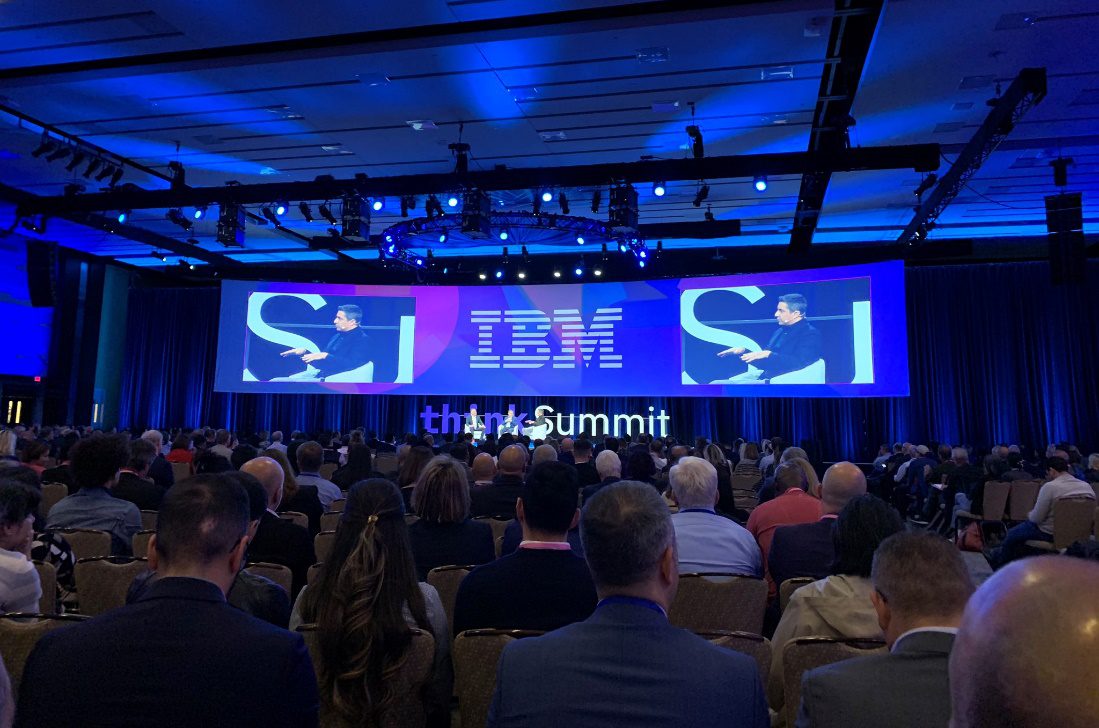What to learn from IBM’s Stroke of Luck to Walk Out Stronger Than Ever?
IBM, in full International Business Machines Corporation, leading American computer manufacturer, with a major share of the market both in the United State and abroad. It was incorporated in 1911 as the Computing-Tabulating-Recording Company in a consolidation of three smaller companies that made punch-card tabulators and other office products. By the 1960s it was producing 70 percent of the world’s computers and 80 percent of those used in the United States.
IBM’s specialty was mainframe computers, expensive medium- to-large-scale computers that could process numerical data at great speeds. The company did not enter the growing market for personal computers until 1981, when it introduced the IBM Personal Computer. This product achieved a major share of the market, but IBM was nevertheless unable to exercise its accustomed dominance as a maker of personal computers. New semiconductor-chip–based technologies were making computers smaller and easier to manufacture, allowing smaller companies to enter the field and exploit new developments such as workstations, computer networks, and computer graphics. IBM’s enormous size hindered it from responding rapidly to these accelerating rates of technological change, and by the 1990s the company had downsized considerably. In 1995 IBM purchased Lotus Development Corporation, a major software manufacturer. As of 2004, IBM had shifted much of its focus to the provision of business consulting and re-engineering services from its hardware and technology focus. The new IBM has enhanced global delivery capabilities in consulting, software, and technology-based process services.
At present day, International Business Machines is an information technology company, which provides integrated solutions that leverage information technology and knowledge of business processes. It operates through the following segments: Cloud & Cognitive Software, Global Business Services, Global Technology Services, Systems, and Global Financing. The Cloud & Cognitive Software segment provides integrated and secure cloud, data and solutions to the clients. The Global Business Services segment provides clients with consulting, application management and global process services. The Global Technology Services segment provides comprehensive IT infrastructure and platform services that create business value for clients. The Systems segment provides clients with innovative infrastructure platforms to help meet the requirements of hybrid cloud and enterprise AI workload. The Global Financing segment encompasses two primary businesses: financing, primarily conducted through IBM Credit LLC, and remanufacturing and remarketing. The company was founded by Charles Ranlett Flint and Thomas J. Watson Sr. on June 16, 1911 and is headquartered in Armonk, New York.
What to Learn from IBM’s Near-Death Experience?

IBM’s traditional mainframe business underwent major changes in the 1990s, as customers increased their emphasis on departmental and desktop computing. However, the decade of the 1990s began with IBM posting record profits up to that point. This proved illusory as its rental to lease conversion was tapping out, demand for mainframes was waning and corporate downsizing was in full swing. Corporate spending shifted from high profit margin mainframes to lower margin microprocessor-based systems and the growth in IBM’s PC business was not nearly enough to offset the company’s mainframe revenue decline.
A decade of steady acceptance and widening corporate growth of local area networking technology, a trend headed by Novell Inc. and other vendors, and its logical counterpart, the ensuing decline of mainframe sales, brought about a wake-up call for IBM: After two consecutive years of reporting losses in excess of $1 billion, on January 19 1993, IBM announced a US$8.10 billion loss for the 1992 financial year, which was then the largest single-year corporate loss in U.S. history
If you look more closely at why IBM survived its near-death experience of 1993, it had little to do with funding big expensive long-term projects. At the time, IBM was losing more money than any company had ever lost in U.S. history–$8.10 billion loss for the 1992 financial year. This was because IBM’s core mainframe business had been disrupted by the advent of the personal computer and the client server. IBM couldn’t compete with smaller nimbler less diversified competitors.
The then CEO John Akers decided that the logical and rational solution was to split IBM into autonomous business units (such as processors, storage, software, services, printers,) that could compete more effectively with competitors that were more focused and agile and had lower cost structures. If IBM had continued to follow the Akers path, IBM would not be celebrating its 100th birthday this year.
What happened was quite different. After Akers was fired as CEO, IBM hired Lou Gerstner as the new CEO. It was the first time since 1914 that IBM recruited a leader from outside its ranks. Even more striking was the fact that Gerstner had no background in computing.
Not knowing much about computing, Gerstner had the good sense to start listening to clients. He discovered that the biggest problem that all the big companies were facing in 1993 was in integrating all the separate computing technologies that were emerging at the time.
So, while continuing to cut costs, Gerstner reversed the move to spin off IBM business units into separate companies. Having understood IBM’s customers, he recognized that one of IBM’s greatest strengths was its ability to provide integrated solutions for customers – a firm that could represent more than piece parts or components—something he would not have learned by listening to the proponents of different technologies within IBM. Splitting the company would have destroyed IBM’s unique competitive advantage.
Bring Advanced AI to The Marketing Industry, IBM Only Do Business with Big Bosses
IBM few days ago announced three new products to add to its growing suite of AI solutions for brand and publishers. The new capabilities are privacy-forward and designed to allow brands to reach consumers while considering user privacy. IBM intends to work with industry leaders, including Xandr/AT&T, Magnite, Nielsen, MediaMath, LiveRamp and Beeswax to help scale the use of AI across the industry. The announcement was made the morning at Advertising Week’s digital-first virtual event.
“While the advertising industry strives to re-emerge strong from the global economic and societal issues we faced this year, it’s also deep in the throes of a major transformation with changes to mobile identity, certain elimination of third-party cookies, compliance and regulatory shifts and increased demand for trust and transparency,” said Bob Lord, SVP, Cognitive Applications and Blockchain, IBM.
He added: “We believe AI is the ‘backbone’ of the new era as the industry prepares for the next generation of advertising. We’re using AI to help solve problems across the advertising industry, just like IBM has in countless other industries like Healthcare, Financial Services and Retail. Our work is a step forward in our evolution to meet the advertising industry’s upheaval, and we are proud to help the advertising industry advance with the value of AI.”

The IBM Watson Advertising suite of solutions leverages AI to help clients make informed, data-based decisions. Expanding on recent additions to the suite, including Watson Advertising Accelerator, Watson Advertising Social Targeting with Influential and Watson Advertising Weather Targeting among others, the planned AI-enabled capabilities include:
- Extensions for IBM Watson Advertising Accelerator: Enhanced video and OTT capabilities available in the coming months that are expected to leverage Watson Machine Learning, to help enable marketers to pivot video advertising creative based on individual user reaction.
- IBM Watson Advertising Attribution: Beta Solution available in the coming months that leverages Watson Machine Learning, which allows marketers to accurately quantify the efficacy of their advertising spend while understanding intent and performance drivers.
- IBM Watson Advertising Predictive Audiences: Solution leverages Watson Studio, to help enable marketers to progress beyond ‘look-alike’ to ‘do-alike’ segments in a privacy-forward format to reach consumers that exhibit similar behaviors.
What Does IBM’s Clients Say Toward This Promising Project?
IBM plans to bring its toolset to industry leaders including Xandr/AT&T, Magnite, Nielsen, MediaMath, LiveRamp and Beeswax to help make it accessible across the advertising ecosystem. The companies are sure to hold an opportunity to drive the next generation of IBM advertising technologies to help reinstate trust in the marketplace.
IBM Watson can offer increased AI capabilities for businesses across language, automation and trust. The planned capabilities from IBM Watson Advertising will be designed to help infuse trust and transparency into the advertising ecosystem. IBM is negotiating definitive agreements with Xandr/AT&T and Magnite.
“We’re currently leveraging IBM’s AI through The Weather Channel, an approach that helps us use data to create meaningful and respectful experiences with consumers in the moments they need us most,” said Rand Harbert, Executive Vice President and Chief Agency, Sales & Marketing Officer, State Farm. “IBM has evolved from an advertising partner to an AI partner, enabling us to help our customers and prospective customers better prepare and respond during life events.”
“The advertising industry is undergoing rapid change and we’re infusing AI into our platform to better equip independent publishers in a sea of walled gardens,” said Tom Kershaw, CTO, Magnite. “We’re proud to stand with IBM, a company rooted in advanced technology, to deliver on the promise of an open web and solve the mounting challenges facing independent publishers.”
Work with The Lawmaker and Ditch Its Facial Recognition Program

IBM is canceling its facial recognition programs and calling for an urgent public debate on whether the technology should be used in law enforcement.
In a letter to Congress in June, IBM CEO Arvind Krishna said the company wants to work with lawmakers to advance justice and racial equity through police reform, educational opportunities and the responsible use of technology.
“We believe now is the time to begin a national dialogue on whether and how facial recognition technology should be employed by domestic law enforcement agencies,” he said, noting that the company no longer offers general purpose facial recognition or analysis software.
“IBM firmly opposes and will not condone uses of any technology, including facial recognition technology offered by other vendors, for mass surveillance, racial profiling, violations of basic human rights and freedoms, or any purpose which is not consistent with our values,” he added. Krishna is of Indian origin and IBM’s first CEO of color.

IBM is a market leader in artificial intelligence. IBM Watson, its AI platform for businesses, is used by companies such as General Motors, KPMG and ESPN Fantasy Football. And its fast-talking AI machine, Project Debater, featured in a Cambridge University event last year on the dangers of artificial intelligence.
The problem of algorithmic bias in data science has become more pronounced, and there’s evidence that AI-powered algorithms display bias against women and black people. Federal researchers found widespread evidence of racial bias in nearly 200 facial recognition algorithms in an extensive USgovernment study last year, highlighting the technology’s potential for misuse.
“Artificial Intelligence is a powerful tool that can help law enforcement keep citizens safe. But vendors and users of Al systems have a shared responsibility to ensure that Al is tested for bias, particularly when used in law enforcement, and that such bias testing is audited and reported,” Krishna said.
IBM has previously cautioned against blanket bans on facial recognition technology, advocating instead for “precision regulation” that would ensure it protects human rights.
The Bottom Lines
The company almost went out of business in the early 1990s, then came back strong with new business strategies and an emphasis on artificial intelligence. IBM has learnt its lesson and is running in all direction, from fresh out of the oven products to best management strategies. Technology and algorithm are no doubt a crucial business in the future, yet IBM wants to represent the industry itself.









